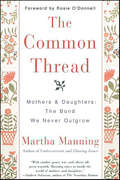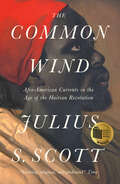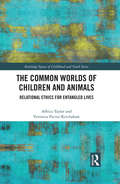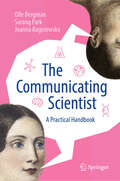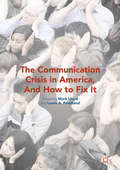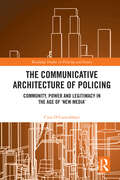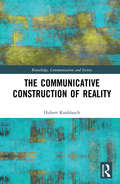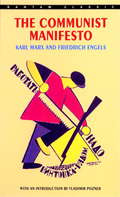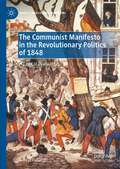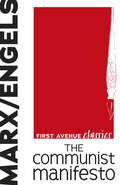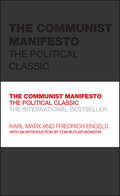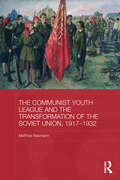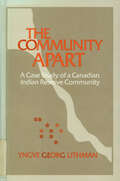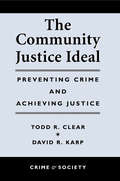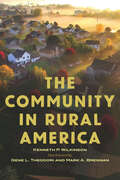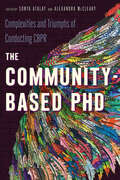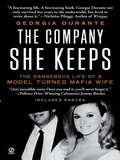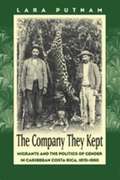- Table View
- List View
The Common Thread: Mothers and Daughters: The Bond We Never Outgrow
by Martha ManningNo relationship is more fulfilling, infuriating, emotional, and problematic than that of mother and daughter. Now, in a work filled with truth, surprises, and humor, renowned psychologist and author Martha Manning offers mothers and daughters of all ages a new way to understand each other. Challenging the accepted premise that this powerful bond must be severed for emotional growth, Manning shows us why this precious attachment is never outgrown, how, if it is damaged, it can be healed, and what will enrich this lifelong commitment while fostering essential independence. The key is empathy, and Manning provides potent tools to help us build stronger ties and celebrate the crazy twists, joys, and secrets inherent in this most glorious of life connections.Combining personal experiences and scrupulous research, The Common Thread helps each of us develop a mutually empowering relationship -- and laugh, too -- as we more deeply connect with and appreciate the mother or daughter we love.
The Common Wind: Afro-American Currents in the Age of the Haitian Revolution
by Marcus Rediker Julius S. ScottA remarkable intellectual history of the slave revolts that made the modern revolutionary eraThe Common Wind is a gripping and colorful account of the intercontinental networks that tied together the free and enslaved masses of the New World. Having delved deep into the gray obscurity of official eighteenth-century records in Spanish, English, and French, Julius S. Scott has written a powerful “history from below.” Scott follows the spread of “rumors of emancipation” and the people behind them, bringing to life the protagonists in the slave revolution.By tracking the colliding worlds of buccaneers, military deserters, and maroon communards from Venezuela to Virginia, Scott records the transmission of contagious mutinies and insurrections in unparalleled detail, providing readers with an intellectual history of the enslaved.Though The Common Wind is credited with having “opened up the Black Atlantic with a rigor and a commitment to the power of written words,” the manuscript remained unpublished for thirty-two years. Now, after receiving wide acclaim from leading historians of slavery and the New World, it has been published by Verso for the first time, with a foreword by the academic and author Marcus Rediker.
The Common Worlds of Children and Animals: Relational Ethics for Entangled Lives (Routledge Spaces of Childhood and Youth Series)
by Veronica Pacini-Ketchabaw Affrica TaylorThe lives and futures of children and animals are linked to environmental challenges associated with the Anthropocene and the acceleration of human-caused extinctions. This book sparks a fascinating interdisciplinary conversation about child–animal relations, calling for a radical shift in how we understand our relationship with other animals and our place in the world. It addresses issues of interspecies and intergenerational environmental justice through examining the entanglement of children’s and animal’s lives and common worlds. It explores everyday encounters and unfolding relations between children and urban wildlife. Inspired by feminist environmental philosophies and indigenous cosmologies, the book poses a new relational ethics based upon the small achievements of child–animal interactions. It also provides an analysis of animal narratives in children’s popular culture. It traces the geo-historical trajectories and convergences of these narratives and of the lives of children and animals in settler-colonised lands. This innovative book brings together the fields of more-than-human geography, childhood studies, multispecies studies, and the environmental humanities. It will be of interest to students and scholars who are reconsidering the ethics of child–animal relations from a fresh perspective.
The Common-Sense Guide to Improving the Safeguarding of Children: Three Steps to Make A Real Difference
by Terry MccarthyAiming to provide purpose and direction in a complex field of work, this book offers direct and straightforward guidance on how to improve child protection on the frontline. Terry McCarthy draws directly from his own extensive practice experience to outline three steps to achieve improved outcomes. First, he explains how to establish an effective culture which develops learning on relationships and styles of authority. Second, he identifies how to support social workers to create a stable, skilled and confident workforce, equipped to deal with emotional challenges. Third, he outlines strategies to enable families to change, with useful techniques for working alongside families to make sure the needs of the child are being met. This approach aims to help children to live safely and well within their own families. This practical guide serves as a guiding compass through the dilemmas and conflicts of child protection practice, and will be valued by frontline social work managers and practitioners alike.
The Communicating Scientist: A Practical Handbook
by Joanna Bagniewska Olle Bergman Sarang ParkAre you a researcher, science professional, or student looking to communicate more clearly and effectively in academia and beyond? The Communicating Scientist has got you covered! This essential guide consists of three easy-to-navigate sections: 1. Theoretical Framework: Plant your feet into a robust foundation that draws on areas from ancient rhetoric to modern psychology, while incorporating insights from marketing, social media, and journalism. This section equips you with the "why" behind effective communication. 2. Core Skills and Techniques: Build a central toolkit for communication activities of science and tech professionals, along with practical tips and suggestions. 3. A Practical Recipe Book: Get step-by-step instructions and hands-on tips from experts for 24 specific communication scenarios, as diverse as writing a grant proposal, developing an elevator pitch, doing a media interview, or curating an online presence. This handbook isn't just another academic communication guide. The Communicating Scientist draws on the knowledge, experience, and tricks of the trade from professional communicators, while remaining strongly rooted in a scientific context. It will help you with scientific peer-to-peer communication, disseminating research to the general public, and collaborating with external partners. Written in a conversational and approachable style, The Communicating Scientist is accessible and appropriate for Communicating Scientists at all stages of their professional journey.
The Communication Crisis in America, And How to Fix It
by Mark Lloyd and Lewis A. Friedlandwith foreword by Michael X. Delli Carpini, Annenberg School for Communication, University of Pennsylvania, USAThis book critiques U.S. public policy about communication and offers guidelines to improve public safety and create strong democratic communities. The lack of effective emergency communication, basic information about health care, education, jobs and the economy, and civic life is at a crisis state, creating problems for the whole community, not just a vulnerable few. The Communications Crisis in America is not because of changing markets or new technology, it is the failure of public policy. The authors include economists, sociologists, journalists, lawyers and a diverse group of media and communication scholars, all offering an urgent call to action and difficult, but achievable steps forward.
The Communicative Architecture of Policing: Community, Power and Legitimacy in the Age of ‘New Media’ (Routledge Studies in Policing and Society)
by Cian Ó ConcubhairThe Communicative Architecture of Policing is a ground-breaking study of police communications and police–media relations in the social media era. It is based on nearly a decade of research on police–media relations, including two years of extended observational study in local newsrooms and police communications departments, and dozens of interviews with police communicators, chief police officers and journalists. This book is the first to undertake a deep ethnography of both police communications and local news media in a single policing area. It also provides an innovative theoretical reappraisal of the mechanics of police–media power relations, grounded in ideas of legitimacy, mass communications and local governing power. The book describes the lived experiences of journalists through the collapse of the local news media in England: declines wrought in large part by the advent of social media. It also describes a crisis of confidence in local journalism and its perceived institutional status in the local community. By contrast, the book charts the emergence of an empowered, professional police communicator class in policing––and its distinctive cultural features––rooted in the mass communications potential of social media. The book weaves together these empirical insights by developing novel approaches to police legitimacy theory and institutional power relations. This book will be of interest to students, scholars and practitioners in the fields of criminology, media studies, communication studies, journalism and policing.
The Communicative Construction of Reality (Knowledge, Communication and Society)
by Hubert KnoblauchThis volume advocates a shift from the social constructivism found in the work of Thomas Luckmann and Peter Berger, to a communicative constructivism that acknowledges communication as an embodied form of action in its own right, according to which social actors, in engaging in communicative action, construct a material social reality that guides, delimits, and enables actions. A study of the importance of understanding the role of communication in an age in which digitization and mediatization have extended the reach of communication to a global level and brought about the emergence of the communication society, The Communicative Construction of Reality shows how communication society does not merely replace modern society and its hierarchical institutions, but complements it in a manner that continually results in conflicts leading to the refiguration of society. As such, it will appeal to scholars of sociology with interests in the sociology of knowledge, communication, and social theory.
The Communist Manifesto
by Karl Marx Friedrich Engels"A spectre is haunting Europe - the spectre of Communism." So begins one of history's most important documents, a work of such magnitude that it has forever changed not only the scope of world politics, but indeed the course of human civilization. The Communist Manifesto was written in Friedrich Engels's clear, striking prose and declared the earth-shaking ideas of Karl Marx. Upon publication in 1848, it quickly became the credo of the poor and oppressed who longed for a society "in which the free development of each is the condition for the free development of all."The Communist Manifesto contains the seeds of Marx's more comprehensive philosophy, which continues to inspire influential economic, political, social, and literary theories. But the Manifesto is most valuable as an historical document, one that led to the greatest political upheaveals of the nineteenth and twentieth centuries and to the establishment of the Communist governments that until recently ruled half the globe.This Bantam Classic edition of The Communist Manifesto includes Marx and Engels's historic 1872 and 1882 prefaces, and Engels's notes and prefaces to the 1883 and 1888 editions.
The Communist Manifesto in the Revolutionary Politics of 1848: A Critical Evaluation (Marx, Engels, and Marxisms)
by David IrelandThis book examines why, on the eve of the pamphlet’s 175th anniversary, the Communist Manifesto left so faint an imprint on Europe’s most revolutionary year of 1848, when it has had such a huge impact on posterity. The Manifesto that year misread bourgeois intentions, put too much faith in the industrial proletariat, too little in peasants, too much emphasis on the German states, and none on England. Marx and Engels preferred in 1848–9 to focus on the middle-class Neue Rheinische Zeitung, declining to galvanise working-class groups whose leadership they had actively sought. They neglected to return swiftly to the German states in their crucial 1848 ‘March days’. The Manifesto’s programme barely overlapped with contemporary campaigners or comparative pamphleteers, or the replacement Demands of the Communist Party in Germany. The book considers the consequences of Marx opting to write the Manifesto alone in January 1848. It also questions the source and significance of the pamphlet’s most memorialised phrase, ‘the spectre of Communism’, whether it was written for the ‘working men of all countries’ addressed in its finale, and whether Marx and Engels regarded the Manifesto as highly in 1848, as they undoubtedly did in later life.
The Communist Manifesto: The Communist Manifesto (First Avenue Classics ™)
by Friedrich Engels Karl MarxThe Communist Manifesto is one of the most influential political books in the world, despite being over one hundred years old. German philosophers Karl Marx and Friedrich Engels authored the manuscript at the beginning of the 1848 revolutions that swept across Europe. The book outlines Communist theories about class struggle, the problems of capitalism, and predicts the rise of the working class (referred to as the proletariat) against the bourgeois that will ultimately end class society. Marx and Engels' theories increased in prevalence during the twentieth century when Communist rulers governed much of the world's population. This is an unabridged version of Samuel Moore's 1888 English translation.
The Communist Manifesto: The Political Classic (Capstone Classics)
by Friedrich Engels Karl MarxDISCOVER THE WORK THAT LAUNCHED REVOLUTIONS AROUND THE WORLD Although it was published in 1848, The Communist Manifesto is as controversial and provocative as ever. Its stirring and poetic language helped spread Marx and Engels' socialist message far and wide, unleashing a century of political revolution. In an age of great inequality, the Manifesto's message of an exploited and suffering working class that must rise up and claim the means of production and wealth continues to resonate. This deluxe edition features an insightful introduction from Tom Butler-Bowdon which explains how the text came to be written, and why it remains popular.
The Communist Movement In Palestine And Israel, 1919-1984
by Sondra M RubensteinThis book traces the origin and development of the communist movement in Palestine and Israel, examining in detail the problems affecting It In the years preceding Israeli statehood In 1948. focusing on these problems within the context of events in the Ylshuv (the Jewish community in Palestine) and the International communist movement, Dr. Rubenstein analyzes unpopular positions advocated by the Communist party, Its efforts to remain loyal to Moscow's dictates, and the succession of rifts within the movement. Concludes with an overview of the communist movement In Israel today, Dr. Rubenstein explains the virtual extinction of party influence on the current lsraeli political scene.
The Communist Movement in the Arab World (Durham Modern Middle East and Islamic World Series #Vol. 7)
by Tareq Y. IsmaelThis book examines the communist movement in the Arab world from the time of the Russian revolution until after the collapse of the Soviet Union. It traces the interaction of the world communist movement which was characterized by an uncritical acceptance of Marxism-Leninism, and local communists, who moved from initial dependence on Moscow to a position more adapted to local circumstances and sensitivities that could be characterized as a distinctive 'Arab communism'. It goes on to trace the impact of 'Arab communism' on a range of issues in the region, arguing that the role of Arab communist parties was highly significant, and disproportionate to the relatively small numbers of communists in the countries concerned.
The Communist Youth League and the Transformation of the Soviet Union, 1917-1932 (BASEES/Routledge Series on Russian and East European Studies)
by Matthias NeumannThe study of Soviet youth has long lagged behind the comprehensive research conducted on Western European youth culture. In an era that saw the emergence of youth movements of all sorts across Europe, the Soviet Komsomol was the first state-sponsored youth organization, in the first communist country. Born out of an autonomous youth movement that emerged in 1917, the Komsomol eventually became the last link in a chain of Soviet socializing agencies which organized the young. Based on extensive archival research and building upon recent research on Soviet youth, this book broadens our understanding of the social and political dimension of Komsomol membership during the momentous period 1917–1932. It sheds light on the complicated interchange between ideology, policy and reality in the league's evolution, highlighting the important role ordinary members played. The transformation of the country shaped Komsomol members and their league's social identity, institutional structure and social psychology, and vice versa, the organization itself became a crucial force in the dramatic changes of that time. The book investigates the complex dialogue between the Communist Youth League and the regime, unravelling the intricate process that transformed the Komsomol into a mere institution for political socialization serving the regime's quest for social engineering and control.
The Communist and the Communists Daughter: A Memoir
by Jane LazarreIn a letter to his baby grandson, Bill Lazarre wrote that "unfortunately, despite the attempts by your grandpa and many others to present you with a better world, we were not very successful." Born in 1902 amid the pogroms in Eastern Europe, Lazarre dedicated his life to working for economic equality, racial justice, workers' rights, and a more just world. He was also dedicated to his family, especially his daughters, whom he raised as a single father following his wife’s death. In The Communist and the Communist's Daughter Jane Lazarre weaves memories of her father with documentary materials—such as his massive FBI file—to tell her father's fascinating history as a communist, a Jew, and a husband, father, and grandfather. Soon after immigrating to the United States as a young man, Lazarre began a long career as a radical activist, being convicted of sedition, holding leadership positions in the American Communist Party, fighting in the Spanish Civil War, organizing labor unions, testifying in front of the House Un-American Activities Committee, and resisting the FBI’s efforts to recruit him as an informant. Through periods of heroism and deep despair Lazarre never abandoned his ideals or his sustained faith in the fundamental goodness of people. This is also the story of Jane as she grew up, married an African American civil rights activist, and became a mother and a writer while coming to terms with her father’s legacy. She recounts her arguments with her father over ideology, but also his profound influence on her life. Throughout this poignant and beautifully written work, Jane examines memory, grief, love, and conscience while detailing the sacrifices, humanity, and unwavering convictions of a man who worked tirelessly to create a brighter future for us all.
The Community Apart: A Case Study of a Canadian Indian Reserve Community
by Yngve Georg LithmanA thoughtful account of life on a reserve and of the interaction of Native people with White society, this volume is based on the author’s three years’ experience with one Indian band on the prairie, during a period in which there were intense negotiations between the band and the federal government. Lithman’s analysis of the political manoeuvring of both sides makes this a rare contemporary account.
The Community Justice Ideal: Preventing Crime And Achieving Justice (Crime And Society Ser.)
by Todd R ClearOver the past quarter-century, U.S. politicians have responded to the public's fear of crime by devoting ever more resources to building and strengthening the criminal justice apparatus, which as a result has grown tremendously in size and cost. Policymakers have also taken steps to toughen procedures for dealing with suspects and criminals, and broaden legal definitions of what constitutes crime, which has led to the incarceration, under harsher-than-ever conditions, of a record-high percentage of the U.S. population. Yet public confidence in the criminal justice apparatus is, if anything, lower than ever before, and fear of crime continues to be high.In recent years, some activists, scholars, criminal-justice officials, and politicians have begun to call for a reexamination of "get-tough" crime policies. A more sensible approach to crime, they argue, would focus on "community justice"--that is, on building healthy communities in which criminality cannot take root, and on making citizens and criminal-justice into partners rather than adversaries. In this thought-provoking study, Todd Clear and David Karp provide both a broad theoretical analysis of this ideal, and a close examination of a range of attempts to put it into practice in communities throughout the country. They conclude that by making the criminal justice system and the public into partners rather than adversaries, community-justice strategies for dealing with crime are both more effective and more resource-efficient than the failed "get-tough" approach.
The Community in Rural America (Society and Natural Resources Book Series)
by Kenneth P. WilkinsonThe Community in Rural America, by Kenneth P. Wilkinson, is a foundational theoretical work that both defines the interactional approach to the study of the community in rural areas and frames its application to encourage and promote rural community development. Recognized for its detailed theoretical construction and logic for understanding human interactions, this book has been widely adopted and used by researchers, extension faculty, and community development practitioners for over thirty years. Presenting Wilkinson’s groundbreaking work in its original form, with a new foreword aimed at clarifying several key concepts in interactional theory, this edition of The Community in Rural America will appeal to new students of the community as well as established scholars in the field.
The Community-Based PhD
by Sonya Atalay Alexandra McClearyThis volume explores the complex and nuanced experience of doing community-based research as a graduate student. Contributors from a range of scholarly disciplines share their experiences with CBPR in the arts, humanities, social sciences, public health, and STEM fields.
The Companion to Development Studies, Third Edition
by Vandana Desai Rob PotterThe Companion to Development Studies contains over a hundred chapters written by leading international experts within the field to provide a concise and authoritative overview of the key theoretical and practical issues dominating contemporary development studies. Covering a wide range of disciplines the book is divided into ten sections, each prefaced by a section introduction written by the editors. The sections cover: the nature of development, theories and strategies of development, globalization and development, rural development, urbanization and development, environment and development, gender, health and education, the political economy of violence and insecurity, and governance and development. This third edition has been extensively updated and contains 45 new contributions from leading authorities, dealing with pressing contemporary issues such as race and development, ethics and development, BRICs and development, global financial crisis, the knowledge based economy and digital divide, food security, GM crops, comparative urbanism, cities and crime, energy, water hydropolitics, climate change, disability, fragile states, global war on terror, ethnic conflict, legal rights to development, ecosystems services for development, just to name a few. Existing chapters have been thoroughly revised to include cutting-edge developments, and to present updated further reading and websites. The Companion to Development Studies presents concise overviews providing a gateway to further reading and a flexible resource for teaching and learning. It has established a role as essential reading for all students of development studies, as well as those in cognate areas of geography, international relations, politics, sociology, anthropology and economics.
The Company He Keeps
by Nicholas L. SyrettTracing the full history of traditionally white college fraternities in America from their days in antebellum all-male schools to the sprawling modern-day college campus, Nicholas Syrett reveals how fraternity brothers have defined masculinity over the course of their 180-year history. Based on extensive research at twelve different schools and analyzing at least twenty national fraternities, The Company He Keeps explores many factors--such as class, religiosity, race, sexuality, athleticism, intelligence, and recklessness--that have contributed to particular versions of fraternal masculinity at different times. Syrett demonstrates the ways that fraternity brothers' masculinity has had consequences for other students on campus as well, emphasizing the exclusion of different groups of classmates and the sexual exploitation of female college students.
The Company She Keeps
by Georgia DuranteA female Goodfellas—the true story of A supermodel turned getaway driver for the mob.All-American beauty Georgia Durante was one of the most photographed models in the country when she married mobster Joe Lamendola. It plunged her into a world she never dreamed of—and one she feared she’d never survive—as a getaway driver for the Mafia and an eyewitness to unspeakable violence, brutality, and murder, as she came to understand the terrifying risk of being married to the Mob.
The Company States Keep
by Aptara. Inc Julia GrayThis book argues that investor risk in emerging markets hinges on the company a country keeps. When a country signs on to an economic agreement with states that are widely known to be stable, it looks less risky. Conversely, when a country joins a group with more unstable members, it looks more risky. Investors use the company a country keeps as a heuristic in evaluating that country's willingness to honor its sovereign debt obligations. This has important implications for the study of international cooperation as well as of sovereign risk and credibility at the domestic level.
The Company They Kept
by Lara PutnamIn the late nineteenth century, migrants from Jamaica, Colombia, Barbados, and beyond poured into Caribbean Central America, building railroads, digging canals, selling meals, and farming homesteads. On the rain-forested shores of Costa Rica, U.S. entrepreneurs and others established vast banana plantations. Over the next half-century, short-lived export booms drew tens of thousands of migrants to the region. In Port Limon, birthplace of the United Fruit Company, a single building might house a Russian seamstress, a Martinican madam, a Cuban doctor, and a Chinese barkeep--together with stevedores, laundresses, and laborers from across the Caribbean. Tracing the changing contours of gender, kinship, and community in Costa Rica's plantation region, Lara Putnam explores new questions about the work of caring for children and men and how it fit into the export economy, the role of kinship as well as cash in structuring labor, the social networks that shaped migrants' lives, and the impact of ideas about race and sex on the exercise of power. Based on sources that range from handwritten autobiographies to judicial transcripts and addressing topics from intimacy between prostitutes to insults between neighbors, the book illuminates the connections between political economy, popular culture, and everyday life.
